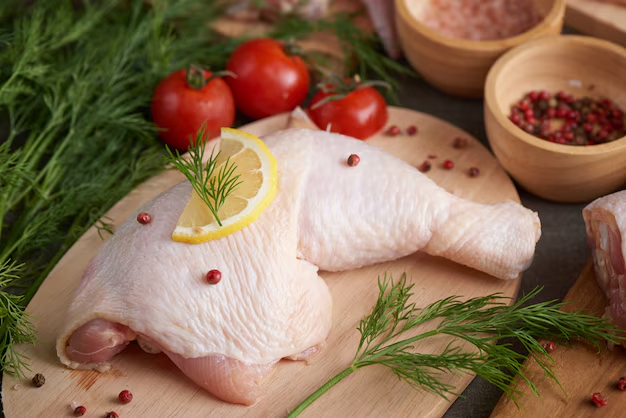How Long Can You Keep Uncooked Chicken in the Refrigerator? A Guide to Safe Food Storage
Picture this: you’ve just returned from the grocery store with a batch of fresh chicken thighs and breasts, ready to whip up a juicy chicken curry or bake some flavorful rosemary chicken. But life happens—plans change, and the chicken ends up sitting in the refrigerator longer than expected. So, how long is too long when it comes to keeping uncooked chicken in the fridge? Understanding this is crucial not just for maintaining flavor but, more importantly, for ensuring food safety. Let’s dig into this essential kitchen knowledge and explore the best practices for storing uncooked chicken.
The Basics of Refrigerating Chicken 🐔
Before we dive into timelines, it’s important to understand why proper storage is key. Raw chicken is susceptible to the growth of bacteria such as Salmonella and Campylobacter, which can cause foodborne illness. Refrigeration slows down bacterial growth, keeping your chicken safe to eat for a certain period.
How Long Is Uncooked Chicken Safe in the Refrigerator?
Typically, raw chicken is best when kept in the refrigerator for 1 to 2 days. This general guideline applies whether you're storing whole pieces like breasts or wings or cut-up portions. It's crucial to maintain fridge temperatures at or below 40°F (4°C) to ensure bacteria remain dormant.
- Timeframe: Uncooked chicken lasts 1-2 days in the fridge.
- Temperature: Keep your refrigerator at or under 40°F (4°C) for optimal safety.
Tips for Storing Uncooked Chicken Properly
While time and temperature are critical, how you store your chicken also plays a significant role in maximizing shelf life and safety. Here’s how to do it right:
Use Airtight Containers or Freezer Bags
Store your chicken in airtight containers or seal it in freezer bags. This reduces exposure to air, which can dry out the chicken and lead to spoilage.
Raw Chicken Placement
Always place raw chicken on the lowest shelf of the refrigerator. This positioning prevents cross-contamination with other foods, as any juices that might leak won't drip onto other items.
Keep Packaging Clean
Maintain cleanliness by wiping any spills immediately and ensuring the chicken's packaging is intact and clean. This minimizes bacteria spread.
- Containment: Use airtight containers.
- Placement: Store on the lowest fridge shelf.
- Cleanliness: Wipe spills promptly.
Extending Chicken’s Life: The Freezing Option ❄️
When you realize you won’t be cooking that chicken anytime soon, freezing is your best bet. Frozen chicken can last much longer while still preserving taste and safety.
Freezing Guidelines
- Wrap it well: Use freezer bags or specialized freezer paper to seal your chicken. Remove as much air as possible.
- Label your packages: Always note the date you froze the chicken. This keeps track of how long it’s been stored.
- Use within recommended time: While technically, chicken can be kept indefinitely in the freezer, it’s best used within 9 to 12 months for optimal quality.
Thawing Chicken Safely
For safety, defrost chicken in the refrigerator rather than on the counter. This prevents the outer parts from getting warm while the inside is still frozen, a potential breeding ground for bacteria.
Knowing When Chicken Has Gone Bad 🚫
Even with the best storage practices, sometimes chicken goes past its prime. Recognizing these signs helps avoid potential foodborne illnesses.
Signs of Spoiled Chicken
- Smell: A sour or ammonia-like odor is a major red flag.
- Color: Fresh chicken should be a light pink color. If it turns grayish, it's likely spoilage.
- Texture: If the chicken feels sticky or slimy, it’s best to err on the side of caution and discard it.
- Odor: Sour smell?
- Discoloration: Gray tint?
- Texture: Sticky/slimy feel?
Related Concerns: Cross-contamination and Food Safety 🍽️
Cross-contamination is a big concern when dealing with raw chicken. Here are some strategies to avoid it:
Kitchen Hygiene Practices
- Designate Cutting Boards: Have separate cutting boards for raw meat and other food items.
- Wash Utensils and Hands: Regularly wash your hands, knives, and utensils thoroughly after handling raw chicken.
- Clean Surfaces Immediately: Regularly disinfect countertops and any surfaces that come into contact with raw chicken.
Cooking to Safe Temperatures
Cooking your chicken to the proper internal temperature is another vital aspect of food safety. Use a food thermometer to ensure the chicken reaches 165°F (74°C) internally.
Visual Summary: Tips for Safe Chicken Storage 📝
Here is a quick-reference guide to ensure your chicken remains fresh and safe:
- 🕑 Time in Fridge: 1-2 days
- 🔒 Containers: Use airtight options
- 🥶 Freezing: Use freezer paper/bag; label with date
- 🥶 Thawing: Defrost in fridge
- 🚫 Spoilage Signs: Sour smell, gray color, sticky texture
- 🍗 Cooking: Heat to 165°F (74°C)
A Last Bite on Chicken Storage
Understanding food storage, especially for raw poultry, is essential for health and enjoyment in the kitchen. Whether you’re planning a meal right away or looking to store your groceries for later, these strategies will help maintain the quality of your uncooked chicken and keep your meals safe and delicious. Embrace these practices, and you'll master the art of chicken storage in no time!
